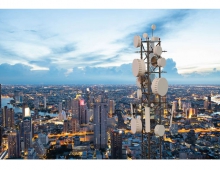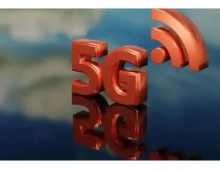
Study Claims That Real-world Experience of AT&T's 5G E is Inferior to 4G
Speed tests from OpenSignal indicate that AT&T's “5G E” network is not faster than existing 4G.
Some AT&T users in the U.S. have recently seen “5G E” appear on the status bar of their existing smartphones, replacing 4G. This move has sparked controversy because AT&T is using updated 4G network technologies to connect these smartphone users, not the new 5G standard.
AT&T describes its 5G E service as follows, “5G Evolution is our first step on the road to 5G. We’re starting by enabling faster speeds on our existing LTE network—up to 2x faster than standard LTE.”
Opensignal analyzed the data of its speed tests and claims that AT&T users with 5G E-capable smartphones receive a better experience than AT&T users with less capable smartphone models, for example those with an LTE Category below 16. However, AT&T users with a 5G E-capable smartphone receive similar speeds to users on other carriers with the same smartphone models that AT&T calls 5G E. "The 5G E speeds which AT&T users experience are very much typical 4G speeds and not the step-change improvement which 5G promises," Opensignal claims.
Opensignal found AT&T was providing solid speeds, an average of 28.8Mbps download rates. But it also offered no discernible difference when compared to most LTE networks. T-Mobile achieved download speeds of 29.4Mbps, while Verizon users averaged 29.9Mbps
"What Opensignal’s data shows is the extent to which LTE, or 4G, networks have improved since LTE’s original launch. Technologies like carrier aggregation — where two or more bands are used to simultaneously connect a user’s smartphone — 256 QAM or 4x4 MIMO, which together are normally called LTE Advanced Pro, offer a much faster experience than the initial version of 4G that was launched back in 2009-2011," Opensignal said.
"OpenSignal's note reveals their methodology is flawed," a spokesperson for AT&T said. "Speed test data purporting to show the 'real-world experience of 5G Evolution' without verifying the capable devices were tested in a 5G Evolution coverage area as shown by the indicator does not accurately represent the 5G Evolution user experience."
In any case, AT&T has a real 5G New Radio (5G NR) network live now for mobile hotspot users, and all four U.S. carriers are launching standards-based 5G NR for smartphone users in the coming months. Verizon intends to switch on smartphone users with 5G service on April 11.
With 5G launching across a range of frequency bands — including the extremely high capacity but problematic for reach mmWave bands — real-world, impartial measures of network experience will become even more important.





















